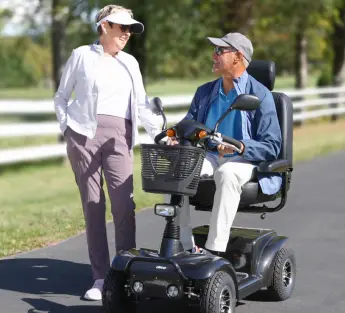The Anatomy of a Portable Patient Lift
If you’re caring for someone who needs maximum assistance to transfer, a Portable Patient lift will save you from back injury and also keep you patient safe. Both hydraulic models and battery powered models work, but if you are a solo caregiver, you will find a power model to be easiest on both of you. Let’s review the basics on the parts of a patient lift starting at the bottom.
The base is a “U” shaped frame, with caster wheels underneath. The legs of the “U” are straight out from the bottom of the “U” at 90 degrees when the lift is not being used, so the base is closed and easy to fit through doorways, so you can take it from room to room. There is a handle on the base that opens the legs outwards so that when you are lifting your patient you have a real sturdy base under them, and you can easily get the legs around furniture and wheelchairs to position the lift just right. Some models even have a power operated “open” button on the remote control instead of a handle. From the center of the base there is a vertical pole or mast that holds a few important parts of the lift, like the motor that does the lift and lower, the rechargeable battery pack and a largehandle that you as the caregiver use to steer the lift where you want it to go.
Attached to the mast is the boom arm and that is the part of the lift that actually goes up and down to lift and lower the patient. The boom arms have different lifting ranges, so you’ll want to choose a lift that fits your particular needs. For instance, on some lifts the boom arm will lower down within 12 or 13 inches to the ground. They are perfect for lifting your patient up from the floor if that should be needed. Other lifts may have a really tall lift range- maybe 78 or 79 inches, which is useful if you need to get your patient up onto a high bed, or changing table. On the end of the boom arm is the cradle or sling bar which is where you attach the sling that you are using to hold your patient while lifting. You will notice some cradles may have just one or two hooks on each side, some may have more hooks to accommodate for special kinds of slings.
Most modern lifts use slings that attach with reinforced cloth straps rather than the older style chain attachments. We’ll review slings in a separate article. Our Spinlife Product Specialists are available to help you select the best patient lift for your situation. Give us a call at 1-800-850-0335.





 Contact Us
Contact Us
 M-F 9am - 6pm ET
M-F 9am - 6pm ET
 Request parts
Request parts Request Service
Request Service
